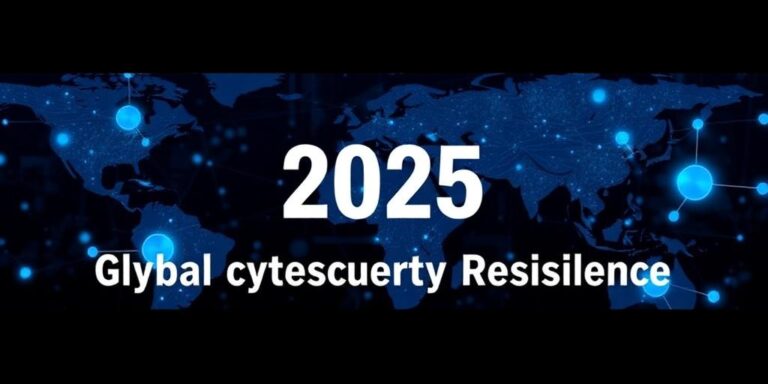Building Global Cyber Resilience: A Collective Effort (2025+)
In an increasingly interconnected world, the importance of cybersecurity cannot be overstated. As we move towards 2025 and beyond, the digital landscape will become even more complex, necessitating a collective and coordinated effort to build robust global cyber resilience.
Understanding Cyber Resilience
Cyber resilience is the ability of an organization or nation to continuously deliver the intended outcome despite adverse cyber events. It goes beyond traditional cybersecurity measures that focus solely on prevention. Cyber resilience incorporates detection, response, and recovery capabilities, ensuring that systems can withstand and recover from attacks.
The Evolving Threat Landscape
The threat landscape is constantly evolving, with attackers becoming more sophisticated and innovative. Some of the key trends to watch include:
- AI-Powered Attacks: Artificial intelligence is being used to automate and enhance cyberattacks, making them more effective and difficult to detect.
- IoT Vulnerabilities: The proliferation of Internet of Things (IoT) devices creates new attack vectors, as many of these devices have weak security.
- Supply Chain Attacks: Attackers are targeting organizations through their supply chains, compromising multiple entities with a single breach.
- Geopolitical Tensions: Nation-state actors are increasingly engaging in cyber espionage and sabotage, further escalating global tensions.
Key Pillars of Global Cyber Resilience
Building global cyber resilience requires a multi-faceted approach that involves collaboration between governments, organizations, and individuals. Key pillars include:
- International Cooperation: Establishing international norms and agreements to govern cyberspace. Sharing threat intelligence and coordinating incident response efforts.
- Public-Private Partnerships: Fostering collaboration between governments and private sector organizations to develop and implement cybersecurity strategies. Sharing expertise and resources to enhance collective defense.
- Cybersecurity Awareness and Training: Educating individuals and organizations about cybersecurity risks and best practices. Promoting a culture of security awareness to reduce human error.
- Investment in Cybersecurity Technologies: Investing in research and development of advanced cybersecurity technologies. Supporting the development of innovative solutions to detect and prevent cyberattacks.
- Resilient Infrastructure: Designing and building resilient infrastructure that can withstand cyberattacks. Implementing redundancy and failover mechanisms to ensure business continuity.
The Role of Governments
Governments play a crucial role in building global cyber resilience. Some of the key actions governments can take include:
- Developing National Cybersecurity Strategies: Creating comprehensive strategies that outline national cybersecurity goals and priorities.
- Enacting Cybersecurity Legislation: Establishing legal frameworks that promote cybersecurity and deter cybercrime.
- Supporting Cybersecurity Research and Development: Funding research and development of new cybersecurity technologies.
- Conducting Cybersecurity Exercises: Conducting regular exercises to test and improve national cyber defenses.
- Engaging in International Cooperation: Working with other countries to establish international norms and agreements on cybersecurity.
The Role of Organizations
Organizations also have a critical role to play in building global cyber resilience. Some of the key actions organizations can take include:
- Implementing Cybersecurity Best Practices: Adopting and implementing cybersecurity best practices, such as the NIST Cybersecurity Framework.
- Conducting Regular Security Assessments: Conducting regular security assessments to identify and address vulnerabilities.
- Investing in Cybersecurity Training for Employees: Providing employees with regular cybersecurity training to reduce human error.
- Sharing Threat Intelligence with Other Organizations: Sharing threat intelligence with other organizations to improve collective defense.
- Developing Incident Response Plans: Developing and testing incident response plans to ensure that organizations can effectively respond to cyberattacks.
Conclusion
Building global cyber resilience is a complex and ongoing challenge that requires a collective and coordinated effort. By working together, governments, organizations, and individuals can create a more secure and resilient digital world.




